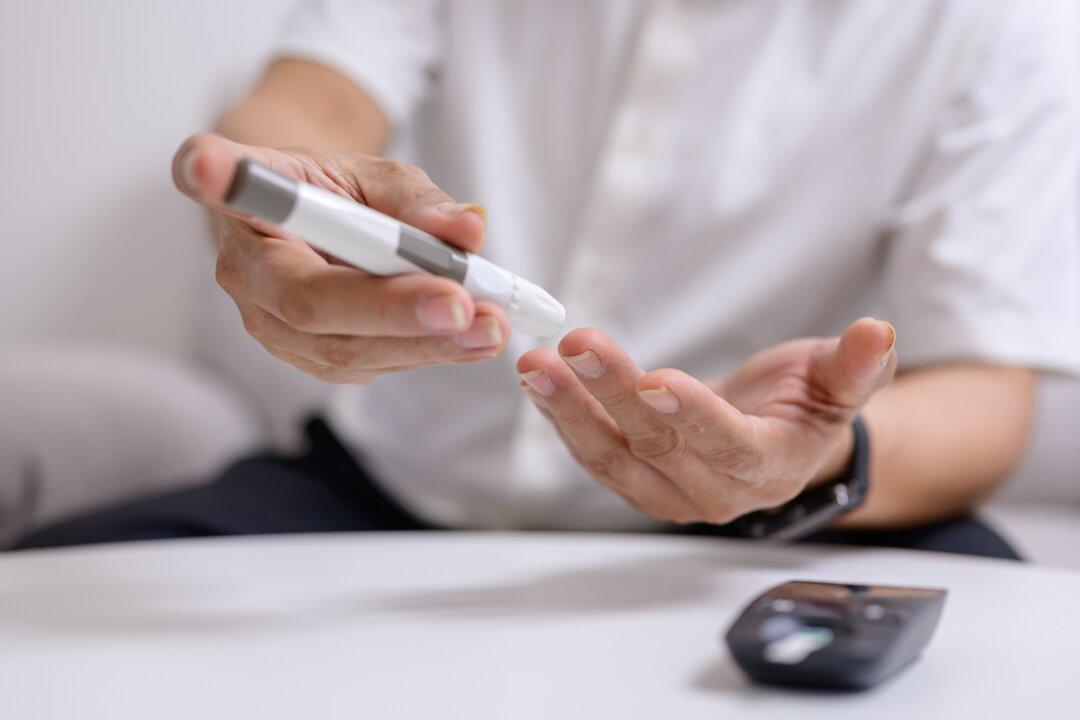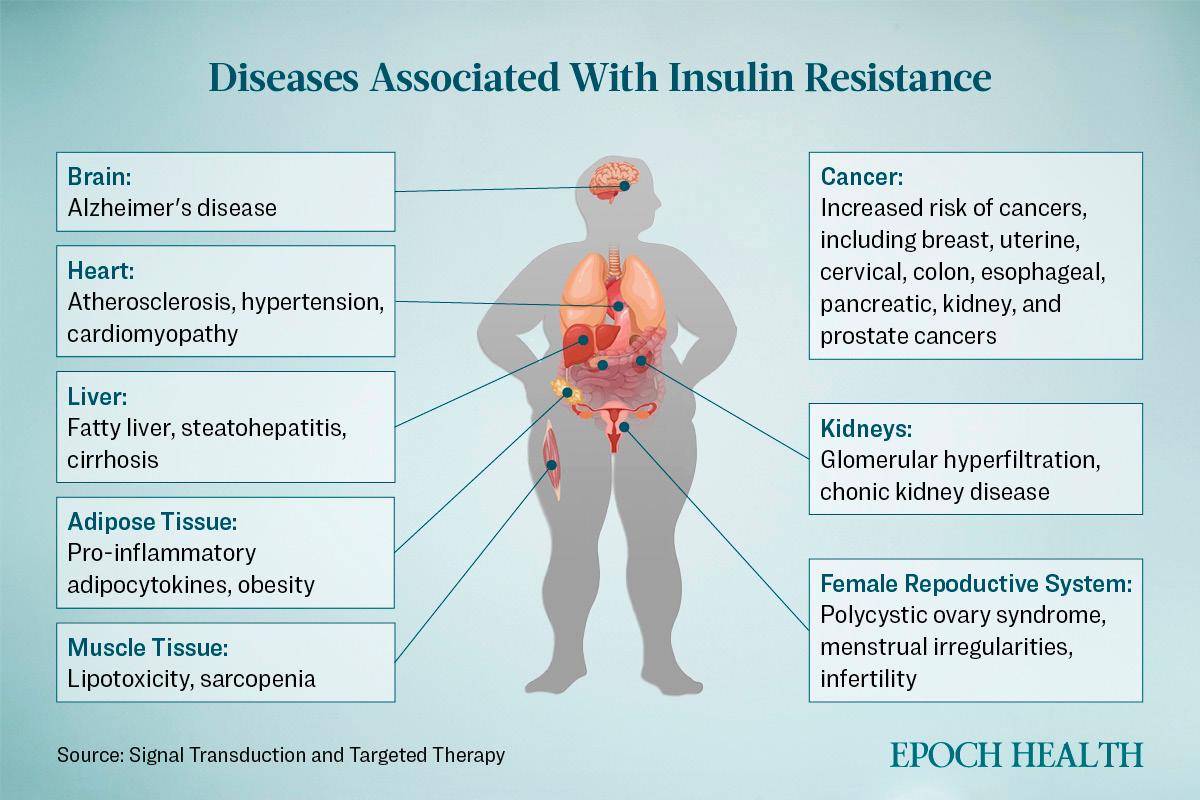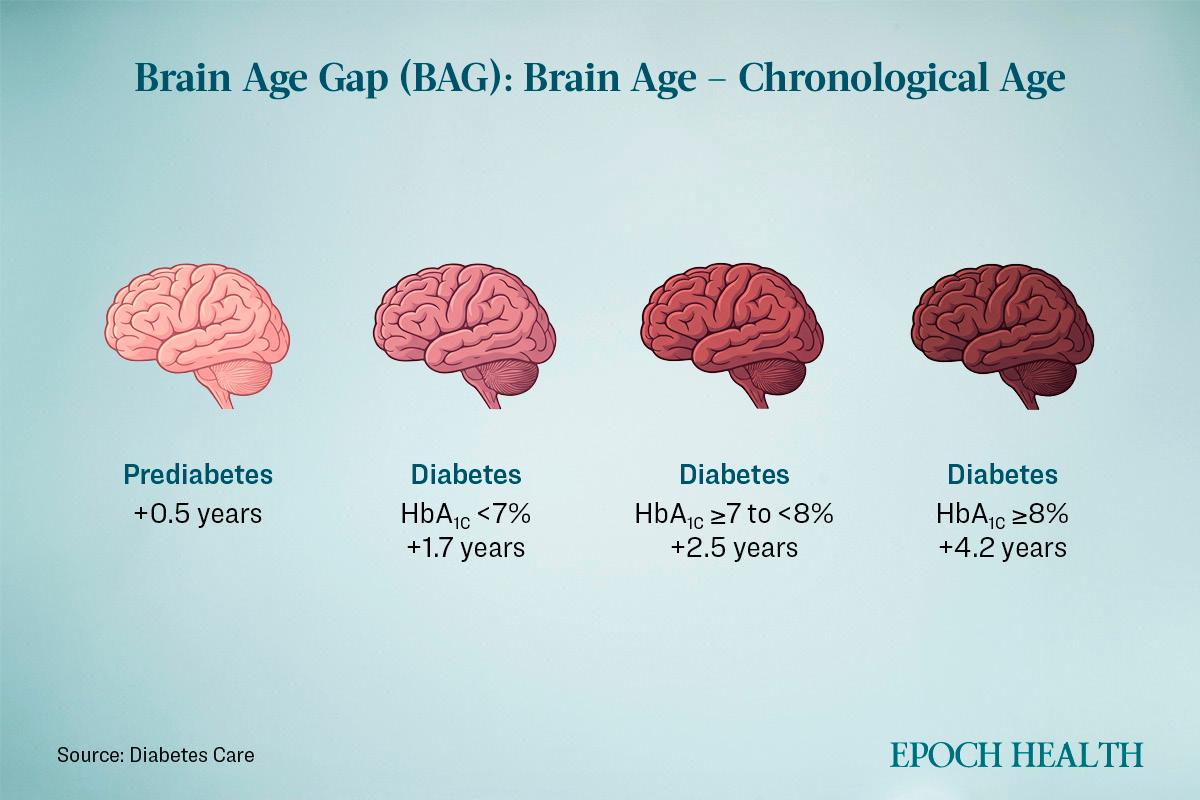
Learn about what insulin resistance is, how you can detect it, and ways to prevent it.
Over 40 percent of American adults aged 18 to 44 are affected by insulin resistance, according to the National Health and Nutrition Examination Survey (NHANES). However, many people remain unaware they have the condition and overlook the potential health risks it poses.
A prospective cohort study presented at the 2024 European Association for the Study of Diabetes Annual Meeting revealed that insulin resistance is associated with 31 diseases, including gout, sciatica, and Parkinson’s disease. Additionally, in women, insulin resistance is linked to a higher risk of early death.
On NTDTV’s “Health 1+1” program, Yuan-Yu Jeng, former chief physician of the infectious diseases department at Taipei Veterans General Hospital and an internist at Shang Wen Clinic in Taiwan, discussed the causes of insulin resistance, relevant screening methods, and effective daily prevention strategies.
What Is Insulin Resistance?
The concept of “insulin sensitivity” was introduced by scientists as early as 1936, Jeng said. Glucose is the primary energy source for every cell in the body, and insulin functions as a key that unlocks the cell membrane, allowing glucose to enter. When cells become less responsive to insulin, this process is disrupted, leading to a condition known as insulin resistance.
In the early stages of insulin resistance, blood sugar levels typically remain within the normal range as the body compensates by producing more insulin to regulate blood glucose. However, the pancreatic beta cells responsible for insulin production can become overworked and gradually lose functionality. Over time, this dysfunction may lead to the development of Type 2 diabetes, as these cells can no longer produce enough insulin to meet the body’s needs.
Key risk factors for insulin resistance include excessive calorie intake, physical inactivity, being overweight or obese, and chronic inflammation.
Diseases Linked to Insulin Resistance
An earlier study found that people with elevated insulin resistance are at a higher risk of developing various diseases over time, including cardiovascular disease, obesity, nonalcoholic fatty liver disease, Alzheimer’s disease, certain types of cancer, chronic kidney disease, and polycystic ovary syndrome.
 |
| Diseases linked to insulin resistance. Source: Signal Transduction and Targeted Therapy |
Insulin not only regulates blood sugar metabolism but also plays a crucial role in fat metabolism, Jeng said. In the early stages of insulin resistance, high insulin levels cause fat to “relocate,” moving from fat cells around the body to the liver, which increases the risk of fatty liver disease. The liver subsequently converts this fat into large amounts of very low-density lipoprotein (VLDL), potentially harming vascular health.
A longitudinal study published in the Journal of the American Society of Nephrology tracked over 10,000 people without diabetes or chronic kidney disease for nine years. It found that people with metabolic syndrome, of which insulin resistance is a key component, had a 43 percent higher risk of developing chronic kidney disease compared to those without such symptoms.
Alzheimer’s Disease: The Brain’s Diabetes
Insulin resistance has implications beyond metabolic health; it can alter the brain’s glucose metabolism and is strongly linked to Alzheimer’s disease, Jeng said. A study published in Diabetes Care in August used a chart to illustrate differences in brain aging among patients with varying degrees of diabetes.
 |
| Differences in brain aging among patients with varying degrees of diabetes. The Epoch Times |
By comparing brain images across various age groups using data from the UK Biobank, the researchers found that even patients with mild insulin resistance, such as those in the prediabetic stage, had brains that appeared nearly half a year older than those in the control group. Furthermore, more severe forms of diabetes correlated with increased brain age; patients with hemoglobin A1C levels above 8 percent had a brain age gap that was about 4.2 years greater than their chronological age.
A 2008 study published in the Journal of Diabetes Science and Technology suggested that Alzheimer’s disease could be considered Type 3 diabetes, highlighting the connection between metabolic dysfunction and cognitive decline.
Symptoms of Insulin Resistance
Although insulin resistance is quite common, Jeng said many people are unaware that it might affect them. Symptoms that may indicate insulin resistance include:
- Persistent thirst
- Frequent urination
- Intense hunger and difficulty tolerating hunger
- Intense cravings for sweets after meals, often accompanied by a tendency to keep eating even after satisfying the craving
- Fatigue and drowsiness after meals
- Dark, velvety patches of skin (acanthosis nigricans)
A Simple Method for Assessment
The hyperinsulinemic-euglycemic clamp, a physiological test, is regarded as the “gold standard” for testing insulin sensitivity. However, it is both time-consuming and expensive. In clinical practice, the Homeostatic Model Assessment for Insulin Resistance (HOMA-IR) is more commonly used, as it only requires measurements of fasting insulin and fasting glucose levels. This test can be completed with a single blood draw, but its cost is higher than standard blood tests, limiting its widespread use, Jeng said.
One study introduced a simpler method known as the triglyceride-glucose (TyG) index. This method requires only fasting blood test results for triglycerides and glucose, which are then applied to a mathematical formula to assess insulin resistance.
The TyG index is calculated using the formula:
TyG index = Ln [(fasting triglycerides (milligrams per deciliter) × fasting glucose (milligrams per deciliter)) / 2]
Ideal values: <4.55 (strict criteria) or <4.78 (relaxed criteria)
According to this formula, the product of glucose and triglycerides, both in milligrams per deciliter (mg/dL), should not exceed 14,200, with a stricter recommendation of keeping it below 9,000.
The TyG index is approximately 80 percent accurate in evaluating insulin resistance, Jeng noted. In other words, if the product of blood glucose and blood lipid levels exceeds 14,200, there is an 80 percent likelihood of having insulin resistance. Conversely, if the product falls below 14,200, there is an 80 percent likelihood of not having it.
“This is an effective initial screening method—a tool that can raise public awareness and is relatively easy to implement,” Jeng said.
Reversing Insulin Resistance Through Exercise
When detected early, insulin resistance can often be reversed through lifestyle changes, including eating a balanced diet, quitting smoking and alcohol, exercising regularly, and getting enough sleep.
Research has shown that people with insulin resistance tend to be less physically active compared to those with normal insulin sensitivity. Lower levels of physical activity correlate with higher inflammatory markers, which are known to increase the risk of insulin resistance.
Exercise is essential for both preventing and reversing insulin resistance, as it promotes glucose uptake by muscle cells, thereby lowering blood sugar levels, Jeng said.
Important Notice: This article was originally published at www.theepochtimes.com by Jessica Lee and JoJo Novaes where all credits are due.
Disclaimer
The watching, interacting, and participation of any kind with anything on this page does not constitute or initiate a doctor-patient relationship with Veripeudic.com. None of the statements here have been evaluated by the Food and Drug Administration (FDA). The products of Veripeudic.com are not intended to diagnose, treat, cure, or prevent any disease. The information being provided should only be considered for education and entertainment purposes only. If you feel that anything you see or hear may be of value to you on this page or on any other medium of any kind associated with, showing, or quoting anything relating to Veripeudic.com in any way at any time, you are encouraged to and agree to consult with a licensed healthcare professional in your area to discuss it. If you feel that you’re having a healthcare emergency, seek medical attention immediately. The views expressed here are simply either the views and opinions of Veripeudic.com or others appearing and are protected under the first amendment.
Veripeudic.com promotes evidence-based natural approaches to health, which means integrating her individual scientific and clinical expertise with the best available external clinical evidence from systematic research. By individual clinical expertise, I refer to the proficiency and judgment that individual clinicians acquire through clinical experience and clinical practice.
Veripeudic.com does not make any representation or warranties with respect to the accuracy, applicability, fitness, or completeness of any multimedia content provided. Veripeudic.com does not warrant the performance, effectiveness, or applicability of any sites listed, linked, or referenced to, in, or by any multimedia content.
To be clear, the multimedia content is not intended to be a substitute for professional medical advice, diagnosis, or treatment. Always seek the advice of your physician or other qualified health providers with any questions you may have regarding a medical condition. Never disregard professional medical advice or delay in seeking it because of something you have read or seen in any website, video, image, or media of any kind. Veripeudic.com hereby disclaims any and all liability to any party for any direct, indirect, implied, punitive, special, incidental, or other consequential damages arising directly or indirectly from any use of the content, which is provided as is, and without warranties.

